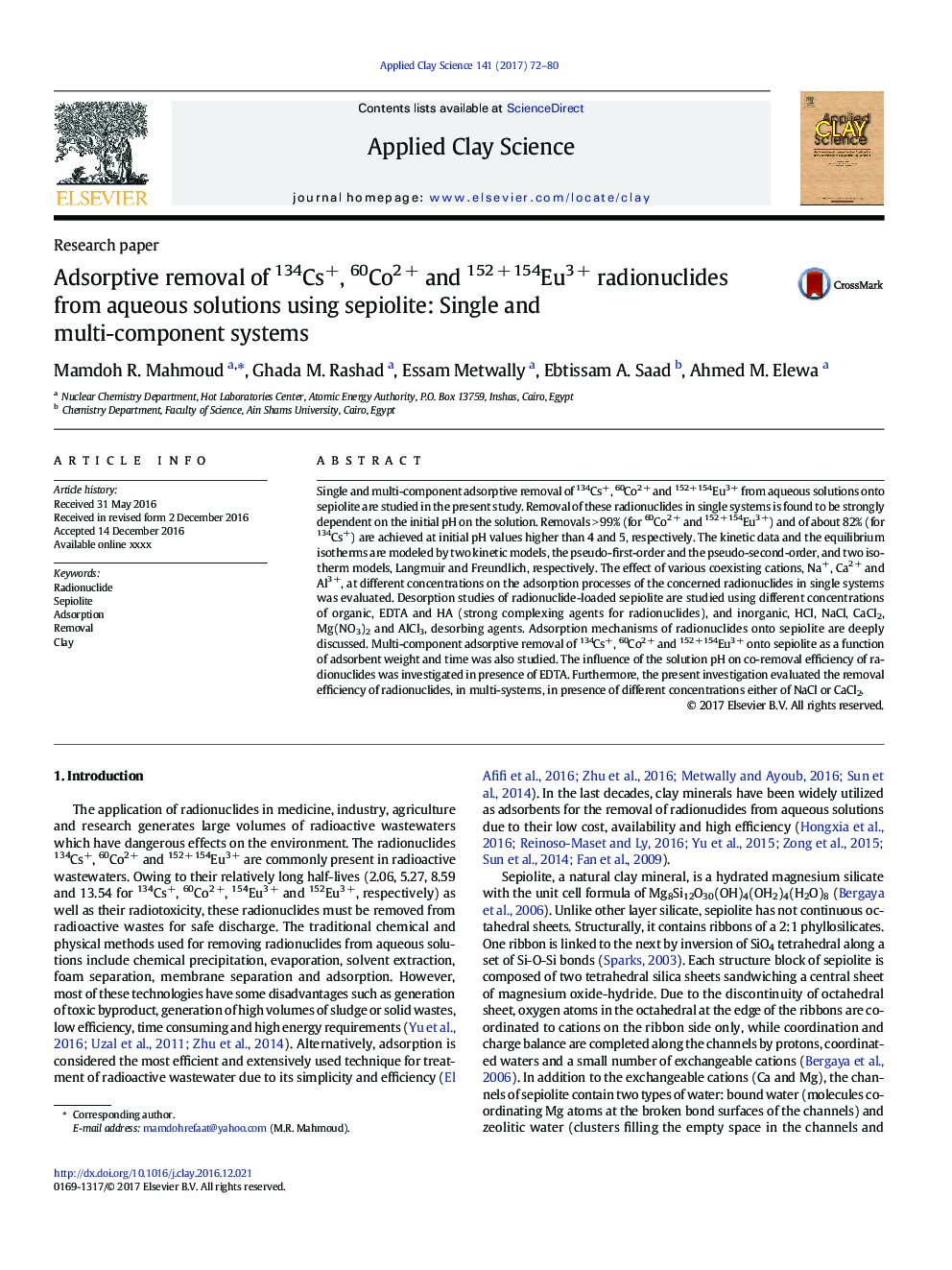| Article ID | Journal | Published Year | Pages | File Type |
|---|---|---|---|---|
| 5468627 | Applied Clay Science | 2017 | 9 Pages |
Abstract
Single and multi-component adsorptive removal of 134Cs+, 60Co2Â + and 152Â +Â 154Eu3Â + from aqueous solutions onto sepiolite are studied in the present study. Removal of these radionuclides in single systems is found to be strongly dependent on the initial pH on the solution. Removals >Â 99% (for 60Co2Â + and 152Â +Â 154Eu3Â +) and of about 82% (for 134Cs+) are achieved at initial pH values higher than 4 and 5, respectively. The kinetic data and the equilibrium isotherms are modeled by two kinetic models, the pseudo-first-order and the pseudo-second-order, and two isotherm models, Langmuir and Freundlich, respectively. The effect of various coexisting cations, Na+, Ca2Â + and Al3Â +, at different concentrations on the adsorption processes of the concerned radionuclides in single systems was evaluated. Desorption studies of radionuclide-loaded sepiolite are studied using different concentrations of organic, EDTA and HA (strong complexing agents for radionuclides), and inorganic, HCl, NaCl, CaCl2, Mg(NO3)2 and AlCl3, desorbing agents. Adsorption mechanisms of radionuclides onto sepiolite are deeply discussed. Multi-component adsorptive removal of 134Cs+, 60Co2Â + and 152Â +Â 154Eu3Â + onto sepiolite as a function of adsorbent weight and time was also studied. The influence of the solution pH on co-removal efficiency of radionuclides was investigated in presence of EDTA. Furthermore, the present investigation evaluated the removal efficiency of radionuclides, in multi-systems, in presence of different concentrations either of NaCl or CaCl2.
Related Topics
Physical Sciences and Engineering
Earth and Planetary Sciences
Geochemistry and Petrology
Authors
Mamdoh R. Mahmoud, Ghada M. Rashad, Essam Metwally, Ebtissam A. Saad, Ahmed M. Elewa,
